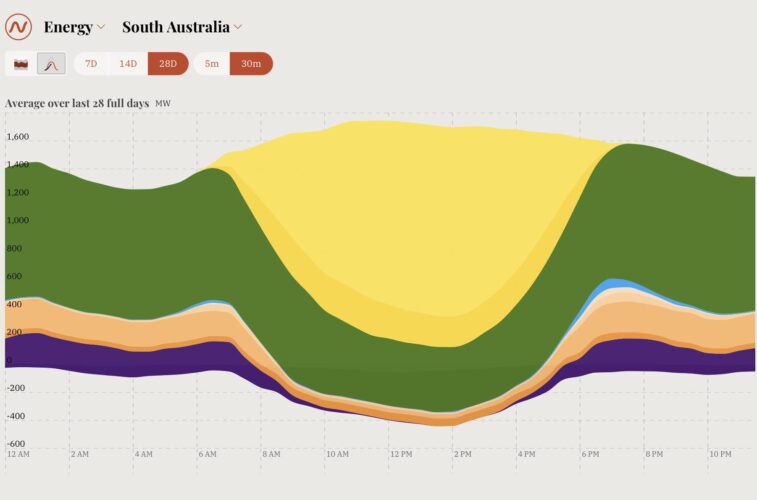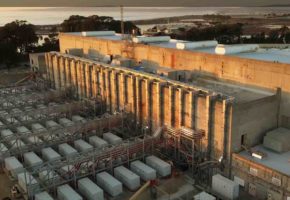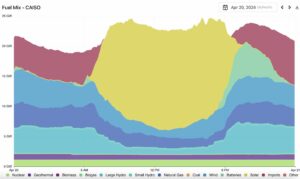Wind and solar have met a stunning 86.9 per cent share of local demand in the South Australia grid over the month of October, smashing previous records and setting a new global benchmark for variable renewable energy in a major grid.
South Australia is already a world leader in the integration of wind and solar, and the new monthly record takes the average share of wind and solar to 71.5 per cent in the last 12 months – making a mockery of the claims that these technologies cannot power a modern grid.
Earlier this week, the main transmission company in the state, ElectraNet, predicted that the state will reach “net” 100 per cent renewables – wind and solar – by 2026/27, which would make it the first grid in the world to reach that milestone, and shine a path for others to follow.
“Net” 100 per cent renewables simply means that wind and solar produce electricity equivalent to the state’s annual demand, but that the state will export and import power when appropriate through the transmission links to neighbouring states – as is the case in almost every grid in the world, be it renewable or fossil based.
The main Australian grid also produced a record renewables share for the month of October, 45.1 per cent, although this also included hydro. Monthly renewable shares were also broken in other states. It is still well shy of its target of 82 per cent renewables by 2030.
One of the most interesting aspects of the South Australian record is that its share of 86.9 per cent renewables was only just shy of the 87.5 per cent renewables share in hydro-dominated Tasmania, which in the month of October relied heavily on imports from Victoria, possibly to avoid drawing down on its dams.

This graph above shows the new record and the dramatic transition of South Australia over the last two decades from a grid based solely on coal and gas, with a heavier reliance on imports, to one dominated by wind and solar, with more exports than imports and a rapidly reducing need for gas.
South Australia has been setting numerous records over the last few months – spring is the “records” season for renewables because of good conditions and mild weather which moderates demand – including a new benchmark of 264 per cent “available” renewables last month.
The measure of “available” renewables combines the amount actually dispatched and the amount curtailed because of negative prices or a lack of capacity on transmission links.
The South Australian government says this points to a huge opportunity to grow green industries within the state, such as green iron, and it is kicking off the process with a state-funded invested in a 250 MW hydrogen electrolyser and a 200 MW hydrogen power plant.

This graph above shows the average share of wind and solar on a daily basis over the last 28 days. The state runs on more than 100 per cent renewables between the hours of 8am and 5pm, and still a very high percentage overnight.
The ElectraNet transmission report from earlier this week notes wind and solar supplied all of the state’s electricity demand for at least part of the day on 282 days over the 12 months to September 30, 2023. That equated to 24 per cent of all trading intervals. The share of renewables averaged 71 per cent over that period.
It also notes that 85 per cent of transmission connection points with the SA Power Networks distribution network has experienced times when the output of distributed solar PV systems exceeded the local demand during the day.
“South Australia has demonstrated that operating at 100% instantaneous variable renewable energy is achievable,” ElectraNet says in its planning document. “We will continue to balance affordability with reliability as we transition to a 100% renewable grid.”
Here two recent podcasts on the transition to 100 per cent renewables.
First with the South Australia state energy minister Tom Koutantonis: Energy Insiders Podcast: South Australia’s big move into green hydrogen
And with former ARENA boss and Sosteneo chief Ivor Frischknecht: Energy Insiders Podcast: The end of spinning machines










